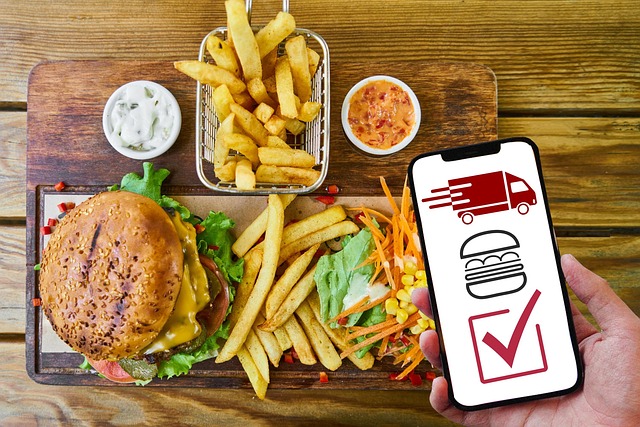Food Delivery in Canada: A Growing Trend
Food delivery services have become a staple in Canada's urban lifestyle, especially in cities like Toronto, Vancouver, and Montreal. Platforms like Uber Eats, SkipTheDishes, and DoorDash dominate the market, offering a wide range of meal options from fast food to fine dining. The convenience of ordering food to your door is highly valued, particularly for busy professionals, families, and students.The trend has grown steadily, fueled by a demand for convenience and variety. With many restaurants adopting delivery services, Canadians enjoy quick and easy access to diverse cuisines. Additionally, the COVID-19 pandemic boosted delivery service popularity, leading to lasting changes in consumer habits. The future of food delivery in Canada remains promising, with more services expanding into smaller cities.

How has food delivery evolved in Canada?
The evolution of food delivery in Canada has been nothing short of remarkable. What once began as a simple concept of pizza and Chinese food delivery has expanded into a vast ecosystem of culinary options. The advent of smartphone technology and user-friendly apps has been a game-changer, transforming food delivery from a occasional indulgence to a daily convenience for many Canadians.
In the past, ordering food for delivery often meant limited choices and long wait times. Today, consumers have access to an extensive array of cuisines, from local favorites to international delicacies, all at their fingertips. This evolution has been driven by technological advancements, changing consumer preferences, and the increasing demand for convenience in our fast-paced society.
What are the most popular food delivery services in Canada?
Several food delivery platforms have risen to prominence in the Canadian market, each offering unique features to attract customers. Uber Eats, SkipTheDishes, and DoorDash are among the most recognized names in the industry, dominating urban centers and expanding into smaller communities.
Uber Eats, leveraging its already established ride-sharing network, quickly became a major player in food delivery. SkipTheDishes, a homegrown Canadian company, has gained significant market share, particularly in Western Canada. DoorDash, while a later entrant to the Canadian market, has rapidly expanded its presence, offering a wide range of restaurant options and competitive pricing.
How do food delivery apps work?
Food delivery apps have streamlined the process of ordering meals, making it more efficient and user-friendly. The typical workflow begins with the user opening the app and browsing through available restaurants in their area. Menus are displayed with detailed descriptions, prices, and often photos of the dishes.
Once a selection is made, users can customize their orders, add special instructions, and proceed to checkout. Payment is usually handled securely within the app, with options for credit cards, debit cards, or digital wallets. After the order is placed, users can track their delivery in real-time, seeing exactly when their food will arrive.
What impact has food delivery had on Canadian restaurants?
The rise of food delivery services has had a profound impact on the Canadian restaurant industry. For many establishments, particularly during the COVID-19 pandemic, delivery became a lifeline, allowing them to continue operating even when in-person dining was restricted. This shift has led to the emergence of “ghost kitchens” – restaurants that exist solely for delivery, without a traditional dining room.
However, the impact hasn’t been uniformly positive. Some restaurants have struggled with the high commission fees charged by delivery platforms, which can eat into already thin profit margins. This has led to debates about fair practices and regulations in the industry, with some cities implementing caps on delivery fees to protect local businesses.
What are some unique features of food delivery in Canada?
Canada’s food delivery scene has some distinctive characteristics that set it apart. One notable feature is the integration of loyalty programs, allowing users to earn points or cashback on their orders. Many platforms have also partnered with local Canadian brands and chains, offering exclusive deals and promotions.
Another unique aspect is the emphasis on supporting local businesses. During the pandemic, there was a significant push to order from independent restaurants to help them survive the economic downturn. This trend has continued, with many Canadians consciously choosing to support local eateries through delivery apps.
How much do Canadians spend on food delivery services?
The spending on food delivery services in Canada has seen a substantial increase in recent years. While exact figures can vary, industry reports suggest that the average Canadian household spends a significant amount on food delivery annually.
| Service | Average Order Value | Estimated Annual Spending per User |
|---|---|---|
| Uber Eats | $30-$35 | $600-$800 |
| SkipTheDishes | $25-$30 | $500-$700 |
| DoorDash | $28-$33 | $550-$750 |
Prices, rates, or cost estimates mentioned in this article are based on the latest available information but may change over time. Independent research is advised before making financial decisions.
These figures reflect the growing importance of food delivery in Canadian consumer spending habits. Factors such as convenience, variety of options, and the impact of the COVID-19 pandemic have all contributed to the increased use of these services.
In conclusion, food delivery has become an integral part of Canada’s culinary landscape. From its evolution driven by technology to its impact on restaurants and consumer behavior, the trend shows no signs of slowing down. As the industry continues to mature, it will likely see further innovations and adaptations to meet the changing needs of Canadian consumers.






